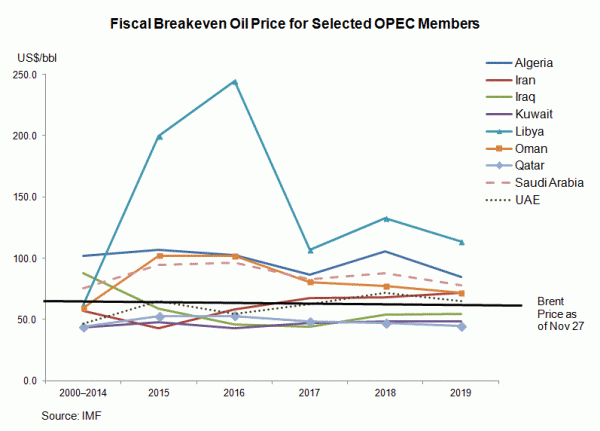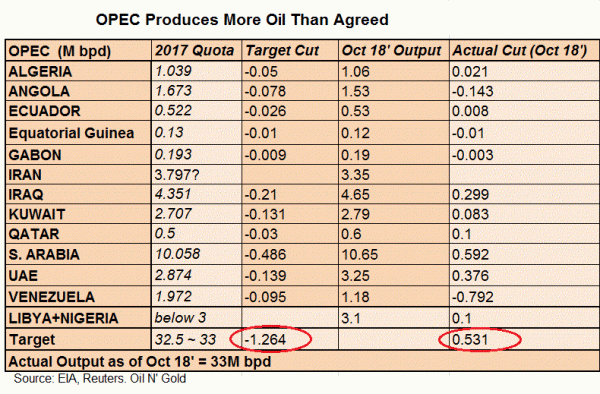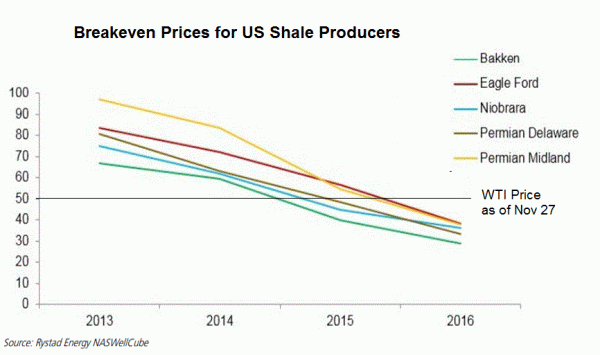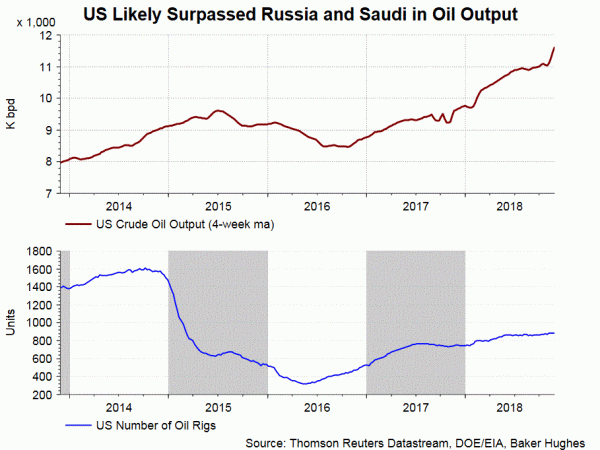Crude oil prices have steadied after the sharp correction over the past 7 weeks. Supporting the recovery are hopes of OPEC or OPEC+ production cut next month. OPEC and non-OPEC producer would meet in Vienna on December 6, discussing ways to defend oil prices. While the market generally expects that the producers would announce output cut, the uncertainty is high. The stakeholders have their own agendas with the needs to balance the economic and political interests. We expect OPEC+ would announce, after next week’s meeting, to at least stick to the output quotas set in 2016 for the first half of next year.
OPEC members are divided among themselves with regards to production, as the member have different fiscal breakeven oil price- the oil price needed to balance the budget. For instance, IMF estimates that Saudi Arabia needs oil price to reach $78/bbl, while Qatar just needs US$45/bbl, to attain fiscal balance next year. According to IMF’s estimate as of May 2018, Iraq, Kuwait and Qatar should still be able to attain fiscal surplus under the current oil price level (using Brent crude oil price as reference) while the other members would need to run a deficit. The countries might probably choose not to cut output, preferring to increase revenue by pumping more oil. Estimated data suggest that most OPEC members are producing above their quotas. Saudi exceeded its quota the most in October while preliminary information shows that the Kingdom’s output rose to 11.2M bpd, +1.14M bpd above its quota, in November. 

Saudi Arabia: Other members probably want to have a deal to reduce production so as to boost oil prices higher. As the big brother of OPEC and the world’s second largest oil producer (surpassed by the US in recent years), Saudi Arabia would lower its output so as to balance the market. The Kingdom has suggested the cartel should lower output by 1M bpd to balance the market. We doubt if it is willing to do this alone. The dilemma facing Saudi is more of political. Trump notoriously defends Saudi’s Crown Prince Mohammed bin Salman despite CIA’s conclusion that he personally ordered the killing of journalist Jamal Khashoggi. The Kingdom might find it obliged to entertain Trump’s request on a production increase to push oil prices lower.
The US has considered oil as an important national interest. Its obsession over oil has been developed since the oil crisis in 1970s. In the aftermath oil supply disruption during the 1973–1974 oil embargo, the US started the strategic petroleum reserve (SPR) and imposed exports ban, forbidding companies to exports oil with a license, in 1975. The ban was eventually lifted in December 2015 as the US has discovered a new way of oil production – shale oil. Shale oil production has facilitated the US to become world’s largest oil producers. It is also the real cause of the weakness in oil prices. The breakeven cost of shale oil production is much lower than that of traditional oil production. As such, US shale investment could ramp up rapidly as world oil price increases. Is such, the rise in oil prices would be capped due to higher supply. This explains the price spread between US WTI crude and Brent crude prices.

Russia has been ambivalent in the deal with OPEC. While signaling a lack of interest weeks ago in joining further output cut, the country’s oil minister has recently hinted that oil price of $70-80/bbl would be fine for the country. This has raised hopes that the leading producer in the non-OPEC arena would agree to lower production. However, we do not have much hope on Russia, due to its lack of compliance in previous deals. While Russia has agreed to produce by the quota of 11.25M bpd according to the OPEC+ agreement made in October 2016, IEA’s estimate suggests that its output has exceed this amount since September. We doubt Russia’s commitment even if anything is agreed upon in the upcoming meeting.
Our best expectation to the outcome of the December meeting is that OPEC+ would agree to produce according to the quotas predetermined in October 2016 for the half of 2019. Given the trend that most OPEC members are current producing more than the quota, there would be effective a production cut of about 1M bpd if the members adhere to quotas. Yet, in order to drive a more sustainable increase in oil prices, OPEC+ would need commit more, both in terms of magnitude and duration.














